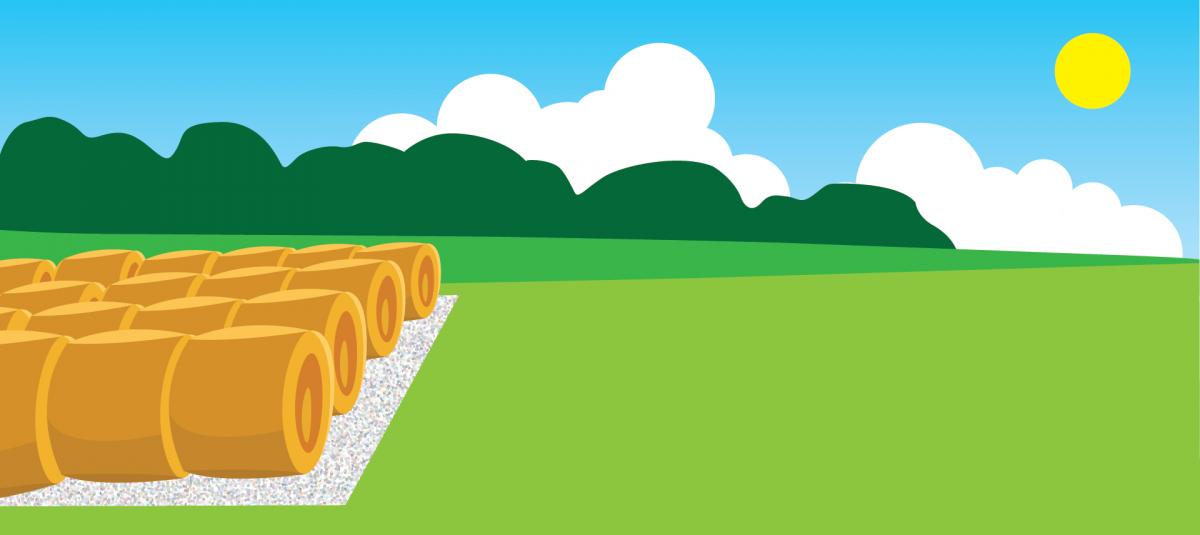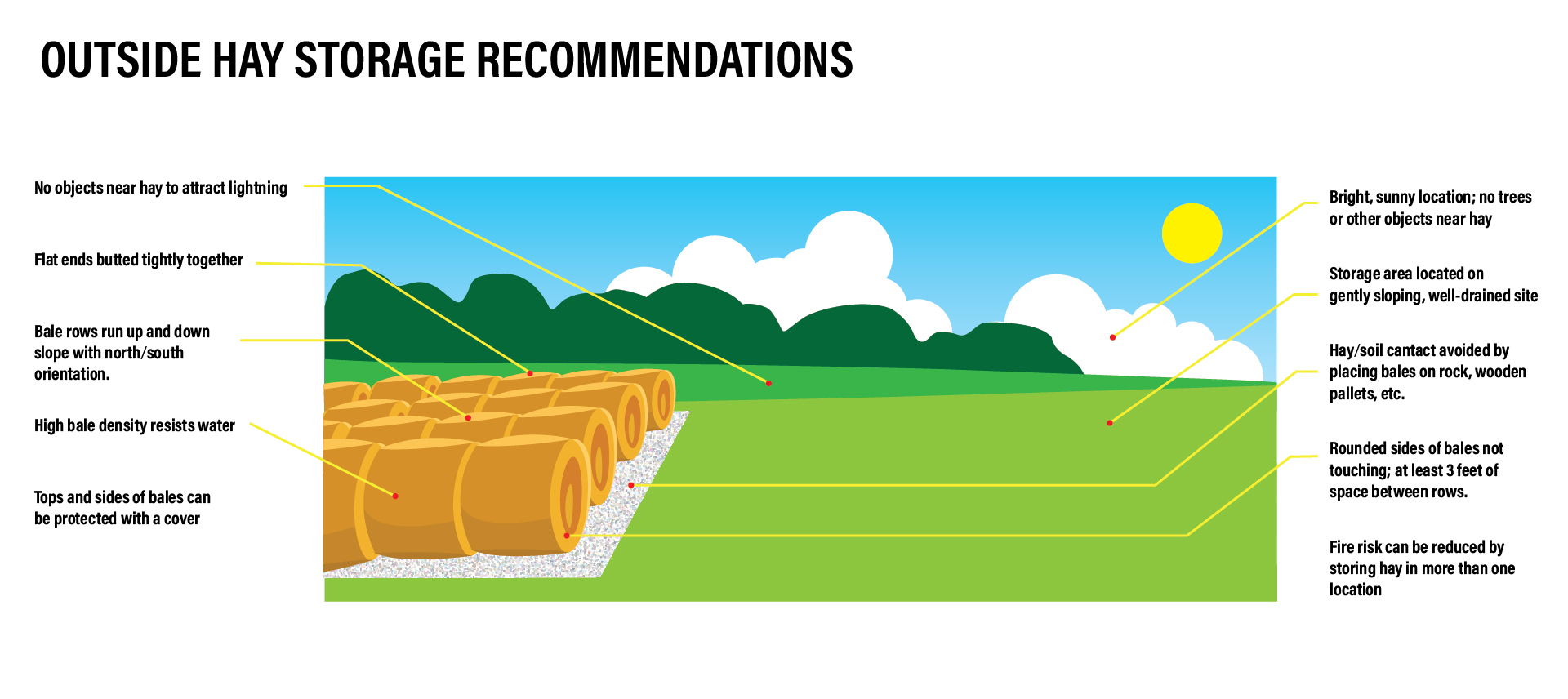
Hay is the most commonly used stored feed on livestock farms in the USA, with a total annual value of billions of dollars. Most hay (especially hay intended for use with beef cattle herds) is packaged in large round bales and stored for several months before it is fed. Round balers are popular because they save time and labor. Unfortunately, much of the value of round baled hay is often lost during storage due to less-than-optimum storage techniques. “Weathering” is the term commonly used to refer to losses that occur due to exposure of hay to the elements during storage.
Weathering of hay is detrimental in several ways. Loss of dry matter during storage is due to plant respiration, microbial activity, and leaching of nutrients resulting from water moving through the hay. Weathering also reduces forage quality, especially digestible energy, which is the primary limiting nutritional factor on most livestock farms. Furthermore, if hay is weathered, animal intake will be reduced, and there will be a higher level of refusal and waste.
The most effective method of storing hay is in a barn or other structure that prevents or minimizes weathering. With barn storage, losses during storage are usually less than 5% of the dry matter. However, many producers have little or no inside round bale storage capability, and thus must store hay outside. Depending on the forage species, amount of rainfall, length of the storage period, and other factors, outside storage losses often exceed 30%, especially in the eastern USA.
Fortunately, by following a few rules, the extent of losses that occur when hay is stored outside can be greatly reduced. A good place to begin is to state that when hay is stored directly on the ground, the greatest damage typically results from water entering hay from the bottom of bales. Thus, eliminating hay/soil contact by placing bales on a concrete pad, crushed rock, or some other object such as railroad ties, can greatly minimize losses.
Well-drained sites should be chosen for hay storage sites. Storing bales near the top of a gently sloping area allows water to flow away from the hay. Bale rows should run up and down the slope in order to avoid trapping surface water.

Bale storage areas should be in a sunny location, preferably where frequent breezes occur. Maximizing the amount of sunlight reaching hay is favorable, so a southern exposure is ideal, and it is best to have bale rows run north and south. Hay should not be stored under trees or other areas where drying is slow. Bale rows should be at least 3 feet apart to favor exposure to sunlight and to allow good air circulation, but the flat ends of bales should be butted tightly together.
Larger bales have a lower total percentage of weathering. Also, as hay density is increased, outside storage losses decline. The coarser the hay, the greater the amount of water that will penetrate from rainfall; fine-stemmed hay tends to form a thatch that helps repel rainwater. These days many producers use balers that provide a wrap that also is helpful in preventing water penetration.
Many types of commercial bale covers as well as tarps, plastic sheeting, or other fabrics can be used to protect hay from rainfall. Such covers are quite effective in keeping rain away from hay if they can be securely fastened, and they if they don’t trap and hold moisture next to the hay.
Losses during hay storage are a major source of financial loss on many livestock farms. It seems that many producers know their approach to storing hay is not ideal and that it is costing them some money. However, it is likely that many of them don’t realize just how much they are losing. Once hay has been placed in storage, any loss is real loss and not just potential loss (i.e. all of the inputs in terms of labor, time, fuel and equipment, etc. have already gone into the hay).
On many farms, hay storage losses greatly add to the cost of owning livestock. Even when hay is stored outside, huge losses are unnecessary. Such losses can be greatly reduced with minor investments of time, energy, and money.
___________________
Foraging Ahead is a column presented by Ragan & Massey and written by Dr. Don Ball, Professor Emeritus at Auburn University. Dr. Ball is one of the authors of “Southern Forages,” available here.
